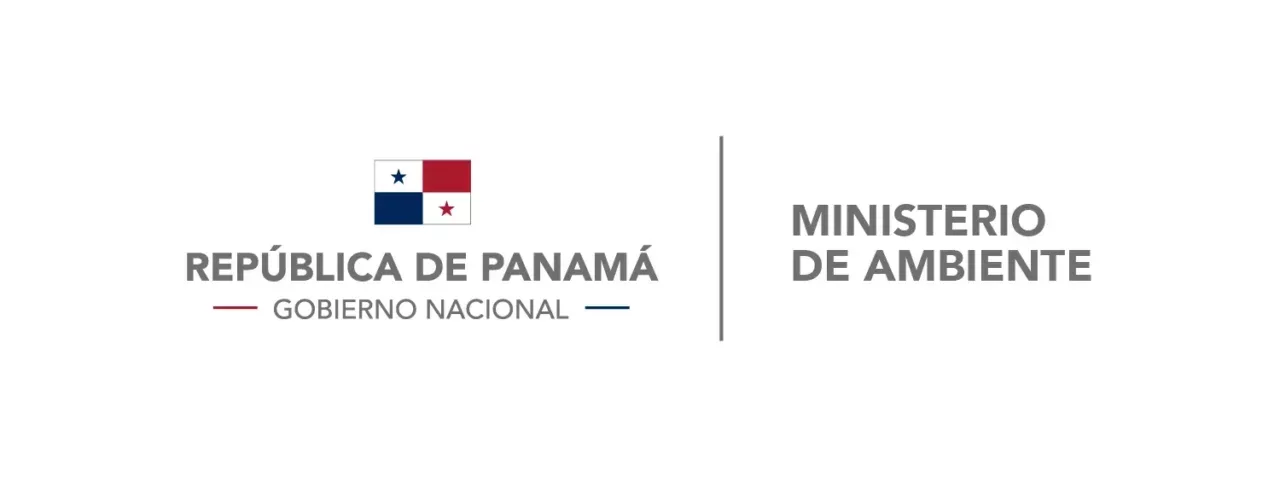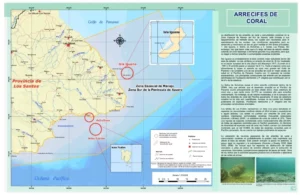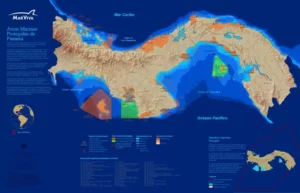Member Type Country
Panama

Panama is represented at ICRI by the Coasts and Seas Division (DICOMAR) of the Ministry of Environment (MiAmbiente). MiAmbiente is a government institution in charge of the protection, conservation, preservation and restoration of the environment and the sustainable use of natural resources to ensure compliance and law enforcement, regulations and the National Environment Policy.
Since its creation, the Coasts and Seas Division (DICOMAR) has been responsible for managing coastal and marine resources, through an ecosystem approach, which contributes to establishing a healthy environment for the well-being of the Panamanian society.
DICOMAR focuses on ensuring marine life and its interactions with ecosystems and their components, the ecological services they provide, the management and relationships of human beings with these resources, organisms and their environment. Its scope includes, but is not limited to, coastal lagoons and estuaries, mangroves, seagrasses, seaweeds, coral and rocky reefs, pelagic ecosystems, species at risk, invasive species, migratory species, and the deep sea.
Related website:
All activities related to marine and coastal resources were transferred from the Authority of Aquatic Resources (ARAP) to MiAMBIENTE in 2015. MiAmbiente issued and approved 16 permits to access genetic resources for the research of coral reefs between 2016 and 2018 in the Caribbean and Pacific coast of Panama.
Surface of coral reefs: 770 km2 Caribbean Sea- 754 km2 and Pacific Ocean- 16 km2
According to data from the Smithsonian Institute of Tropical Research, in Panama, there are 237 organisms that allow the formation of coral communities. The Caribbean coast contains the largest among of coral reefs, and 81% of them are within the limits of the Guna Yala region.
Since October 2020 there has been a Law Project (No. 196) “Establishing the Comprehensive Protection of Coral Reef Ecosystems, Associated Ecosystems and Associated Species in Panama“. This law project was presented through a citizen participation initiative promoted by the MiAmbiente to the National Assembly of Deputies. Since September 2020, Institutions from the public and private sector participated in the first study meeting of the bill that protects the reef ecosystems in Panama. The Environment sub-commission of the National Assembly valued the contributions of the Aquatic Resources Authority (ARAP), the Ministry of Health and MiAmbiente.

The purpose of this Law Proposal is to protect, conserve, restore, prevent pollution and rehabilitate coral reef ecosystems, coral communities, coral species, and other species and ecosystems associated with coral reefs such as reef fish, wetlands, marine grasses, as well as establishing all the actions and measures necessary to ensure the conservation and resilience of coral ecosystems. The Government recognizes that the conservation of coral reefs, their associated ecosystems, and associated species are in the public interest and essential to guarantee the right to a healthy environment for all people.
MPA(s) with coral reefs: 12
More Information:
| Location | Reef surface (km2) | % of EEZ |
| Caribbean Sea | 754 | 0.345% |
| Pacific Ocean | 16 | 0.05% |
| ZEE Total | 770 | 0.35% |
| Name | Category | Location | Coral reef surface (km2) | |
| 1 | Coiba National Park | National Park, UNESCO’s World Heritage Site since 2005 | Gulf of Chiriquí, Pacific Ocean | 17 km2 |
| 2 | Gulf of Chiriqui Marine National Park | National Park | Gulf of Chiriquí, Pacific Coast | 12.5 km2 |
| 3 | Iguana Island | Wildlife refuge | Los Santos, Pacific coast | Indeterminable |
| 4 | Escudo de Veraguas Island | Protected Landscape | Bocas del Toro Caribbean coast | 87.4 km2 |
| 5 | Matumbal Marine reserve | Marine Reserve | Bocas del Toro, Caribbean coast | |
| 6 | Bastimento Island Marine Park | National Park | Bocas del Toro, Caribbean coast | |
| 7 | Portobelo | National Park | Colon, Caribbean coast | 48 km2 |
| 8 | Galeta Island | Protected Landscape | Colon, Caribbean coast | |
| 9 | San Lorenzo Park | Protected Area | Colon, Caribbean coast | |
| 10 | Corregimiento de Nargana | Wildlife area | Guna Yala Region, Caribbean coast | 610 km2 |
| 11 | Las Perlas Archipelago | Special Management Marine Area | Panama Gulf, Pacific Ocean | 1.5 km2 |
| 12 | The southern part of the Azuero Peninsula -, (Achotines Coastal Coral Reef and the coral communities of Los Frailes Islets) | Special Marine Coastal Management Zone (ZEMMC in Spanish) | Azuero Peninsula, Pacific Ocean | Indeterminable |

Coiba National Park (CNP) and its Special Marine Protection Zone have been a UNESCO World Heritage Site since 2005. Located in the Gulf of Chiriqui (Panama Pacific coast), CNP surface is 1743.5 km2 and includes 38 islands and the waters surrounding them.
Learn more here.
MiAmbiente and UNDP-GEF are currently implementing a project called “Conservation and sustainable use of biodiversity in coastal marine production landscapes” (2018-2022). This project is based at the Special Marine Coastal Management Zone (ZEMMC) of the Southern part of the Azuero Peninsula (Azuero Sostenible). The goal is to expand the conservation and sustainable use of biodiversity into the production of land/seascapes for the integrated environmental management of coastal marine areas and for the benefit of the coastal population. This will be achieved through the development of an enabling policy for the integrated environmental management of coastal marine production landscapes, facilitating the conservation and sustainable use of coastal marine biodiversity and the ecosystem goods and services provided to society through the integrated environmental management of the ZEMMC (292,970 ha), and by systematising better practices and lessons learned about coastal marine biodiversity conservation and its sustainable use in production landscapes and seascapes of the ZEMMC of the southern part of the Azuero Peninsula.
- The Sustainable Azuero Project has appointed a consultancy to develop a baseline and monitoring of reefs and coral communities in the ZEMMC area (2020-2021). The objective is to develop the baseline and first monitoring campaign for the coral reefs and coral communities of the South Azuero Special Integrated Coastal Marine Management Zone to improve their comprehensive management.
- It is also launching the consultancy to develop the National Ocean Policy (PNO), the Strategy, as well as its National Action Plan (October 2020-October 2021). The Inter-institutional Commission for the formulation of the PNO was created by Executive Decree No. 431 of October 25 th, 2018, and is the entity responsible for the creation of the guidelines for the National Ocean Policy, which defines the four strategic axes: 1. Biodiversity and Marine Resources, 2. Maritime Governance and Security, 3. Blue economy and logistics development, and 4. Science, Technology and Innovation.
Last Updated: 25 January 2024